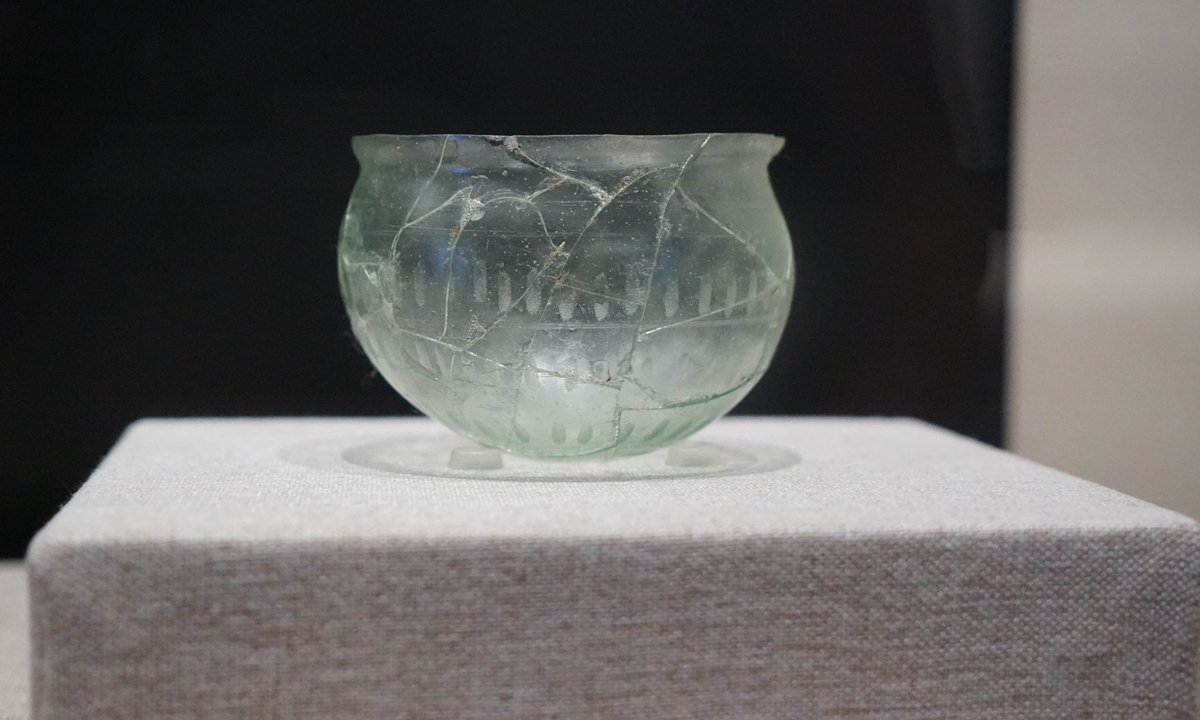Nestled in a dimly-lit corner of an imposing exhibition hall, a bronze statue of a human head stands, capturing viewers’ attention. The relic, discovered in the upper reaches of the Yangtze River, is bathed in soft yellow light, establishing a deep sense of history and reverence. In proximity, a porcelain bowl, reclaimed from an ancient shipwreck in the river’s lower reaches, speaks volumes about China’s profound maritime legacy.
These two items are just a small fraction of the numerous exhibits on display that chronicle the remarkable evolution of China’s famed Yangtze River over many millennia. The exhibition, titled “The Common Rise of River and Sea: The Yangtze River and Maritime Civilization Exhibition of Fine Archaeological Relics,” has been unveiled at the China Maritime Museum in Shanghai. A celebration of the Belt and Road Initiative (BRI), this exhibition opened to the public on the auspicious occasion of China’s National Maritime Day 2023, and will run until October 8th.
The exhibition has assembled an impressive collection of 180 precious cultural artifacts, sourced from the archives of 41 museums and archaeological institutions spanning 13 Chinese provinces. These collected pieces illustrate the ancient conduct of shipping, the intertwining of the Yangtze River culture and maritime civilization, and the instrumental role of the “golden waterway” in nurturing the Maritime Silk Road and the prosperity of global civilization.
The exhibition serves as an extraordinary feast for archaeology enthusiasts, showcasing 34 main archaeological discoveries from China, 13 of which feature in “China’s top 100 archaeological finds in the last 100 years.” These significant finds encapsulate the historical synthesis of the Yangtze River and marine civilizations from the Neolithic Age to the present, illuminating the intricate tapestry of China’s cultural legacy.
Exhibition curator, Cai Tingting, shares that the chosen exhibits hail from areas along the Yangtze River and its tributaries or from ancient shipwrecks excavated from China’s coastal maritime regions. Each exhibit has been meticulously chosen to encapsulate regional shipping cultures and the enduring forms of intercultural communication borne from them.
One of the exhibition’s crown jewels is the bronze drum featuring patterns of feathered men aboard ships, unearthed in Guangnan county. This relic from the upper reaches of the Yangtze River in Southwest China’s Yunnan Province, dating back to the Western Han Dynasty, is considered one of the Yunnan Provincial Museum’s greatest treasures.
Among the other highlights is the lacquer plate with a pattern of Ji Zha hanging up his sword. Despite its fragility, the plate provides essential evidence of trade and cultural exchanges facilitated by the Yangtze River during the Three Kingdoms era.
As the exhibition marks the 10th anniversary of the China-proposed BRI, it serves as a testament to the tremendous contributions that the Yangtze River, the cradle of Chinese civilization, has made to global civilization.
With its thousands of years of rich history, the Yangtze River basin remains a significant nexus between the Silk Road Economic Belt and the 21st Century Maritime Silk Road. It continues to bear the new historical mission of supporting the ‘unimpeded dual circulation of domestic and overseas markets.’ The exhibition, therefore, becomes not only a historical exploration but also a glimpse into the future of global civilization and commerce.
READ MORE:
